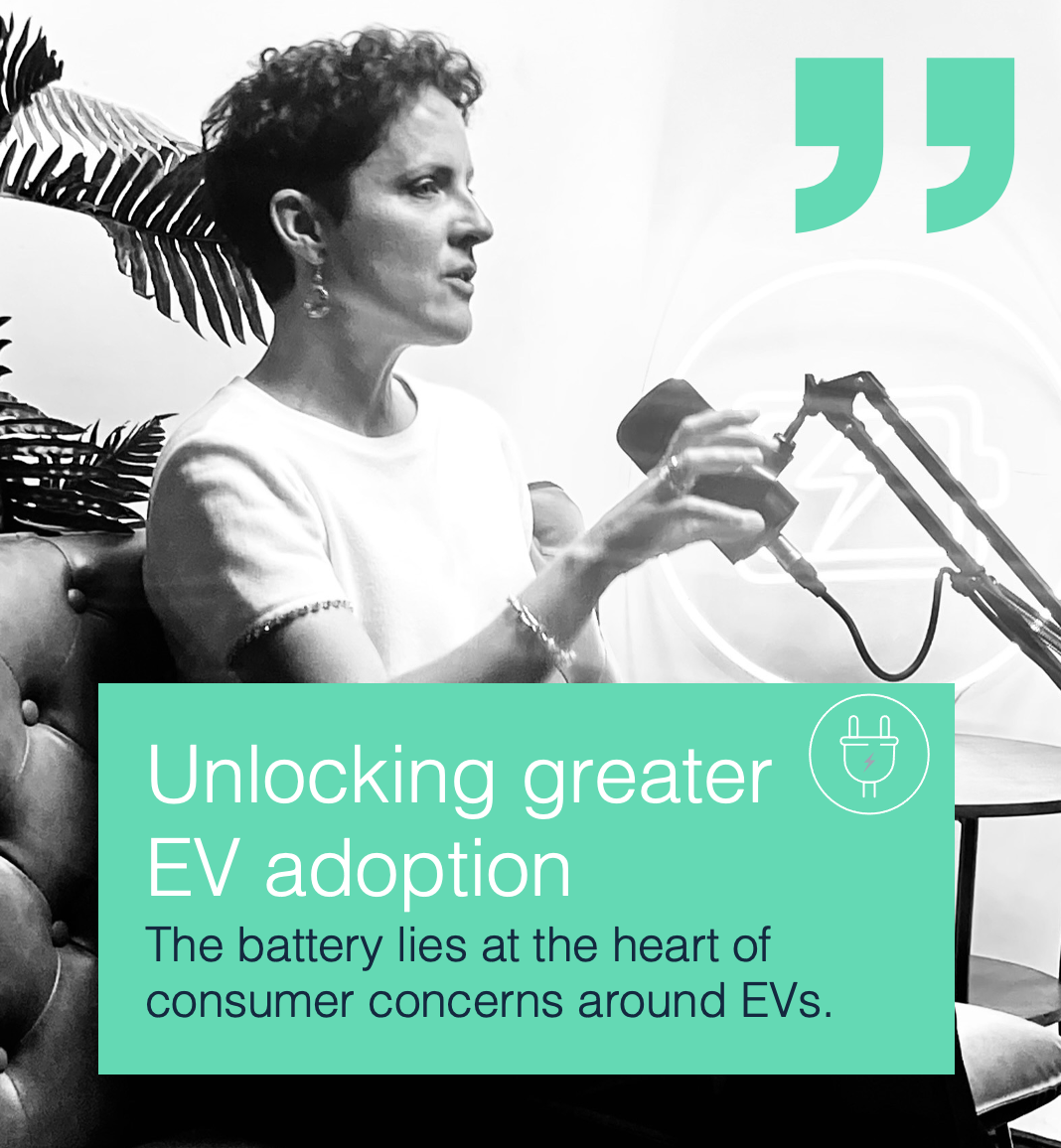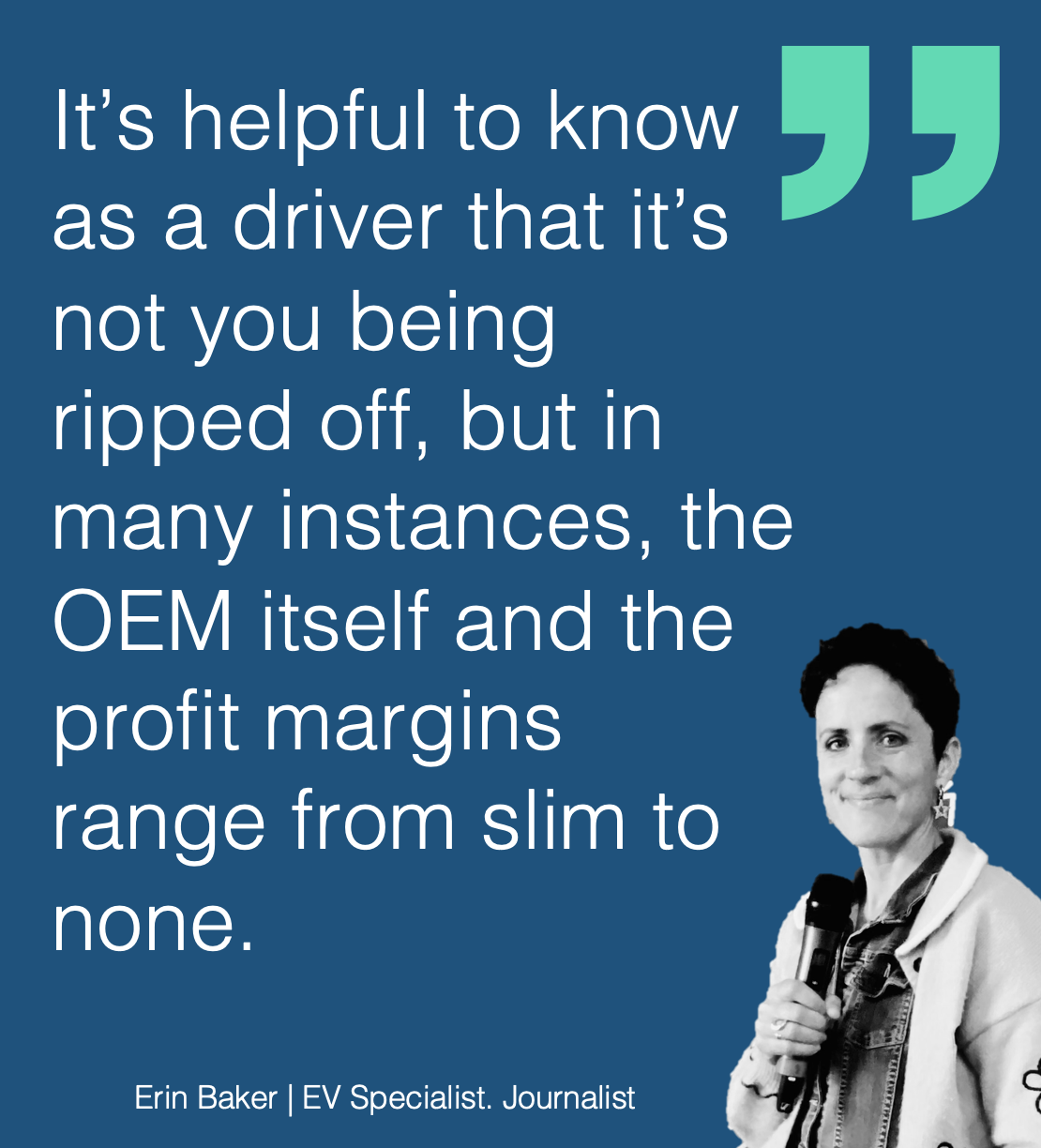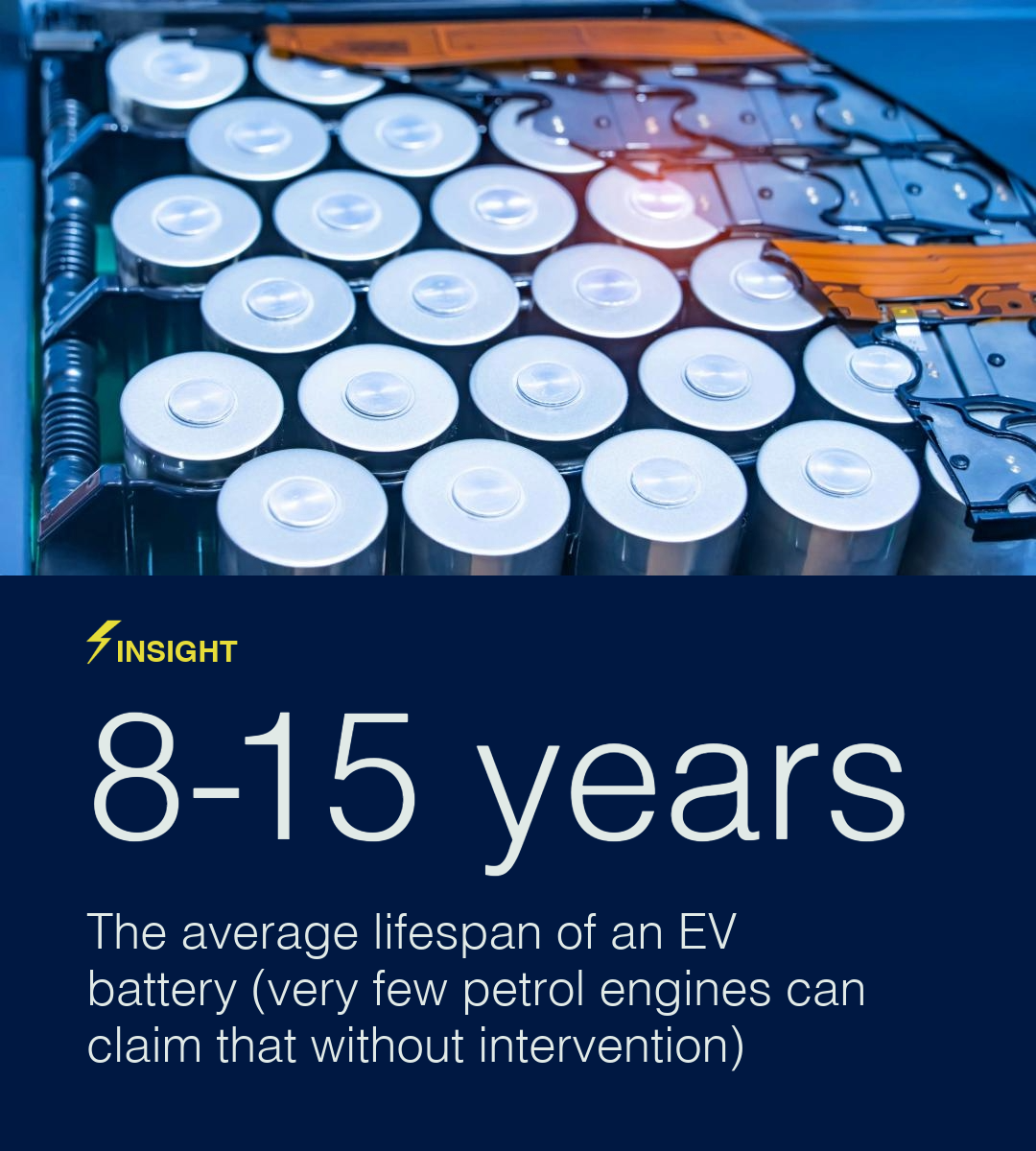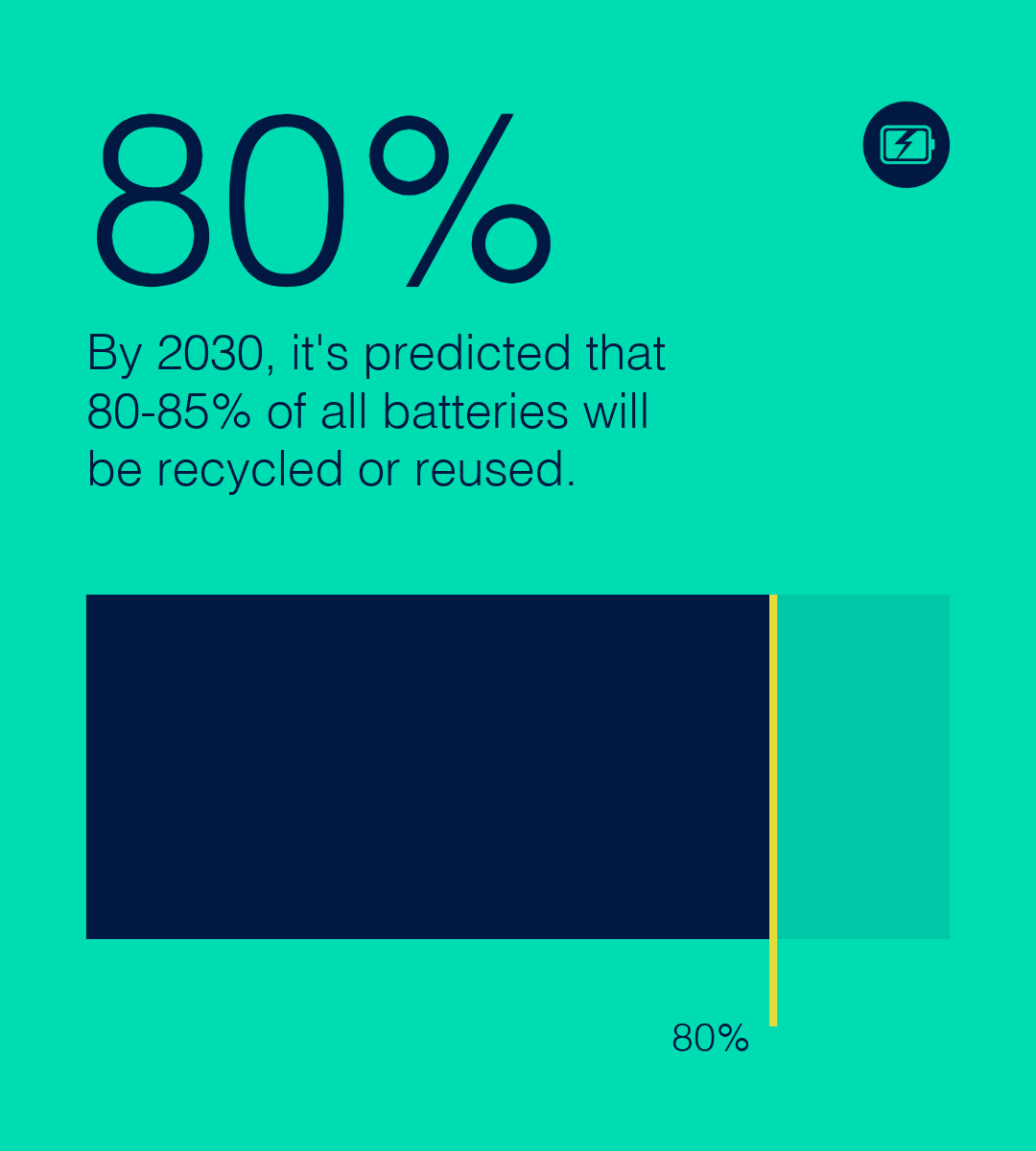Batteries: the key to unlocking EV sales
By Erin Baker, Brand Ambassador
However, you look at it, batteries lie at the heart of drivers’ queries, concerns and worries about going electric. In other words, battery health information and reassurance are the keys to mass adoption. According to the latest marketplace data in the UK, the top barriers to purchase are:
- Price
- Charging anxiety
- Reliability
All three are influenced by the battery.
Discover more content...
It’s the battery which creates that stubborn 30 per cent price differential between an EV and its petrol equivalent - albeit that differential disappears when the EV is three years old. Auto Trader now has countless examples of price parity between EVs and petrol models on its site and more than a handful of cases where the electric version is actually cheaper than the petrol model).
It’s the battery that drives concern about charge because less efficient batteries mean less range which means more exposure to the vagaries of the public charging network (we’ll save that particular thorn for another day).
And it’s the battery which lies behind the public’s worries about EV reliability; they keep hearing that the batteries don’t last, their performance drops quickly, they catch fire, you can’t repair them when they go wrong, and that you have to scrap the entire car if the battery is involved in a collision.
We can even add a fourth concern here which features further down the list of motorist worries but which is gaining in credence: that EVs aren’t any better for the planet than fossil-fuelled cars because the batteries use rare earth metals that are extracted in awful ways, both environmentally and ethically.
The challenge ahead
So, it’s simple then, right? Create affordable batteries that don’t crush OEM margins but still deliver a real-world range of 400 miles (while being lightweight and compact, of course). Establish domestic battery production in every market, ensuring environmentally safe and ethically sound extraction and processing of raw materials into cathode active materials. Oh, and let’s also address the 16,000 shortfall in trained technicians to repair batteries, reducing wait times and bringing down insurance premiums—all before 2025 please!
Hmmm.
Well, we can’t do all of that, at least, not in the timescale we need to restore consumer confidence and get private EV sales shifting to meet ZEV mandates next year and beyond. But actually, we can do more than we think to increase consumer confidence. Because much of it is about messaging.

Let’s take the cost
Many drivers don’t realise most of that uplift is due to battery costs, so OEMs and retailers should explain that costs are coming down because battery production is getting cheaper and more efficient.
This messaging also combats dealer mistrust; consumers think dealers and brands are just getting fat on bigger profits from expensive EVs. It’s helpful to know as a driver that it’s not you being ripped off but, in many instances, the OEM itself, and the profit margins range from slim to none.
We all need to do more, too, to explain that the used EV market is a great hunting ground for drivers right now, especially EVs over three years old and have done most of their depreciating.

Which brings us on to the next concern: charging and range
The average range of a new electric car is now 275 miles, up more than 50 miles on three years ago. This rapid improvement rate of battery efficiency should be advertised in every dealership and on every OEM site.
Otherwise, consumers look at a first-gen Nissan Leaf, with a max range of 79 miles, and compare it to today’s Leaf, with more than 200 miles on offer, and think that’s how much the battery has degraded. They don’t realise it’s the result of improving battery technology between generations, and that 79 miles was all that the first Leaf was capable of. In other words, it’s a good-news story, not a bad-news one.


275
The average mileage achieved by an EV battery today. Up more than 50 miles from three years ago.
Moving on to reliability
This is the big one, with so much consumer advice and easily accessible information urgently required. Batteries catching fire is, staggeringly, the primary reason 42 per cent of considerers won’t make the move to electric, according to a recent Auto Trader survey. The fact that EV’s catch fire far less than combustion engines seems almost irrelevant: people have read that they do in incorrect media reports, and social media rumours, and the lie has stuck as fact.
We need to be citing Autoinsurance EZ data showing that the likelihood of an EV fire is 0.03 per cent. According to Tesla’s 2023 Safety Report, internal-combustion cars are 20 times more likely to catch fire than EVs, other research tells EV’s are 60% ‘less likely’ to catch fire. But also, we need to explain that e-scooter battery fires are a whole different kettle of fish involving many dodgy aftermarket batteries all built entirely differently.
We also need to talk about Tesla battery data which shows a drop in performance of just 1-2 per cent a year. We need to explain there are fewer parts to go wrong, that the average EV battery has a lifespan of 8-15 years (very few petrol engines can claim that without intervention) and that EVs come with an eight-year battery warranty: show me a petrol car that comes with the same engine promise.
Finally, we need to talk a lot about in-life battery care, and how OEMs have companies like EV Battery Solutions, waiting in the wings to monitor the battery’s health and enable swift repairs.

What environmental concerns?
And as for the environmental worries? Isn’t it funny how no one ever questioned the carbon footprint of their petrol or diesel car, and yet we can’t wait to throw it up as a reason not to go electric? Which is bizarre because, whichever way you look at it, EVs are better.
Their manufacture produces more carbon, for sure, but the miles you drive claw that back pretty quickly. And the manufacture is getting greener by the year: by 2030, it’s predicted that 80-85 per cent of all batteries will be recycled or reused; lithium, cobalt and nickel can be recycled up to 10 times without significant degradation (we forecast that by 2040 no more lithium will need to be extracted as our total need will be in a closed circular economy); steel and aluminium which make battery casings can be recycled almost infinitely, and cobalt and nickel can be recycled at up to 95 per cent of their material content, lithium at up to 90 per cent.
Really? We’re going to insist that EVs aren’t better for the environment than heavy lumps of multiple moving parts of non-recyclable metal that burn hydrocarbons extracted from finite oil wells?
It’s all in the messaging. Consumers are crying out for it. Why aren’t we delivering?

Let's take charge of the future, together
We’re transforming the in-life battery operations of the world’s leading automotive manufacturers. Get in touch to find out how.



